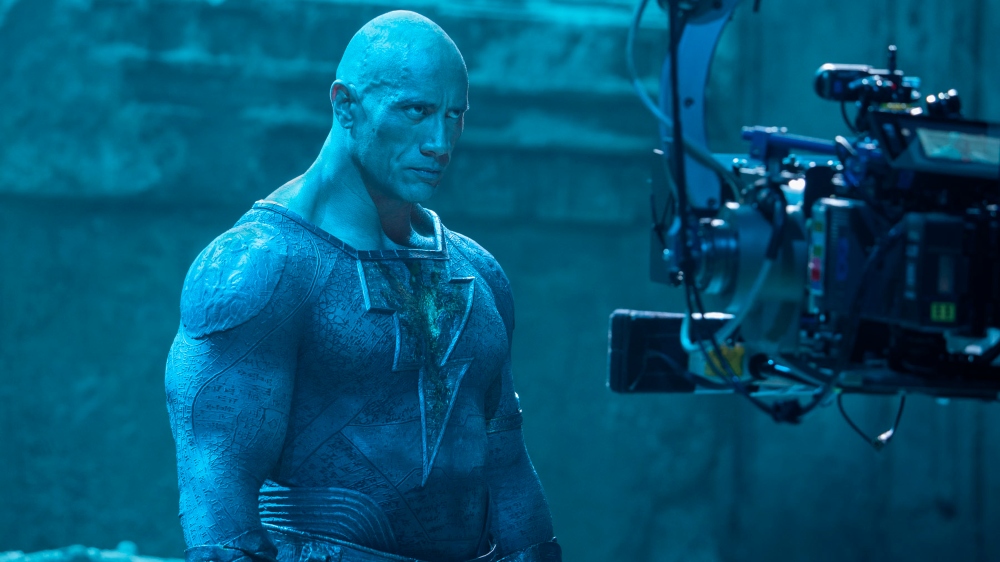
Black Adam Editor Mike Sale, ACE had one day off between wrapping his work on Red Notice and starting to cut Dwayne Johnson‘s next movie alongside fellow editor John Lee, but he dove into the gig headfirst and didn’t look back.
Sale has developed a feel for Johnson’s work over the years, having also edited Skyscraper and Central Intelligence. However, Black Adam marked his first comic book movie, and it had to double as both an origin story for the intimidating antihero as well as an introduction to the JSA — Hawkman (Aldis Hodge), Dr. Fate (Pierce Brosnan), Atom Smasher (Noah Centineo), and Red Cyclone (Quintessa Swindell). That’s a lot of major characters to juggle, and that’s before you take into account the film’s villain, as well as the oppressed people of Khandaq.
Below the Line recently spoke to Sale, who talked about using comedy to break up the tension in the VFX-heavy film. Sale also discussed how the film evolved through test screenings, and the mid-credits scene that — spoiler alert! — sees Henry Cavill return as Superman.
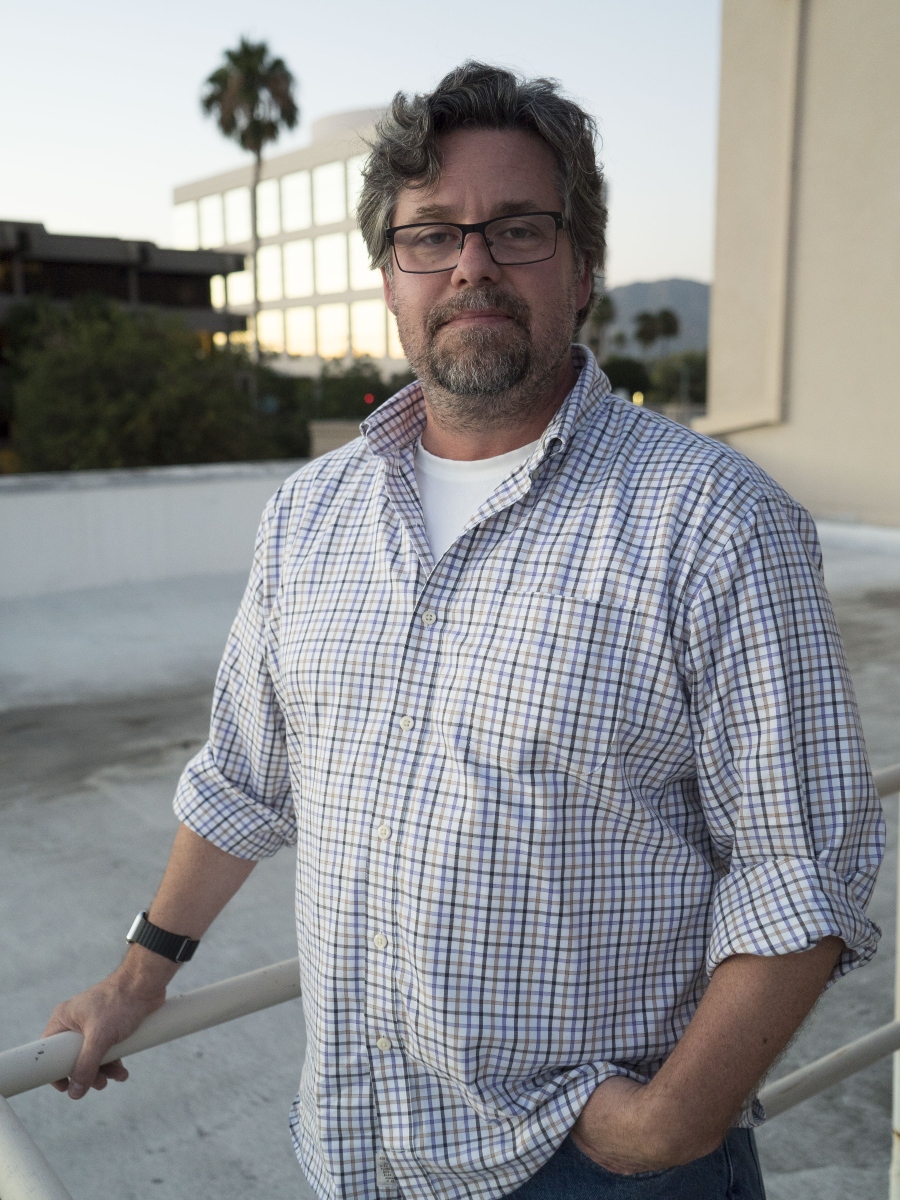
Below the Line: You’ve worked on a number of films starring Dwayne Johnson. How quickly did you say “yes” to working on Black Adam?
Mike Sale: Immediately. I was really excited to be involved in the DC universe. Being a kid [who] grew up watching Batman on TV, Superman serials on TV, and then when that Superman movie came out in 1978, I was a kid working in a movie theater, cleaning them up. When they offered me Black Adam, I’m like, ‘yep, but when does that start?’
BTL: Did you go straight from Red Notice into Black Adam or did you have a bit of a break in between?
Sale: I had absolutely no break. I had one day off. On a Saturday, I was hugging [Red Notice director] Rawson [Marshall Thurber] in the parking lot of Sony because we just finished Red Notice. I had Sunday off, and on Monday, I went into the offices for Black Adam.
BTL: How is the shorthand in terms of the producer-editor relationship with Dwayne Johnson?
Sale: It’s been great. I mean, I work with Dwayne and he has wonderful producers, [including] Beau Flynn, leading the charge. The communication is awesome and they’re fantastic to work with.
BTL: The film doesn’t just serve as an origin story for Black Adam but also introduces the JSA into the DCU. How important was it to make sure the film served both sets of characters?
Sale: It was hugely important and very difficult. It’s a lot of characters to introduce in one movie because not only do you have JSA and Black Adam, but you also have the Kahndaqis, like Adrianna and Amon, and you have the other villain, Ishmael, and then Black Adam is kind of a villain. You’ve got a lot going on and balancing that was extremely challenging.
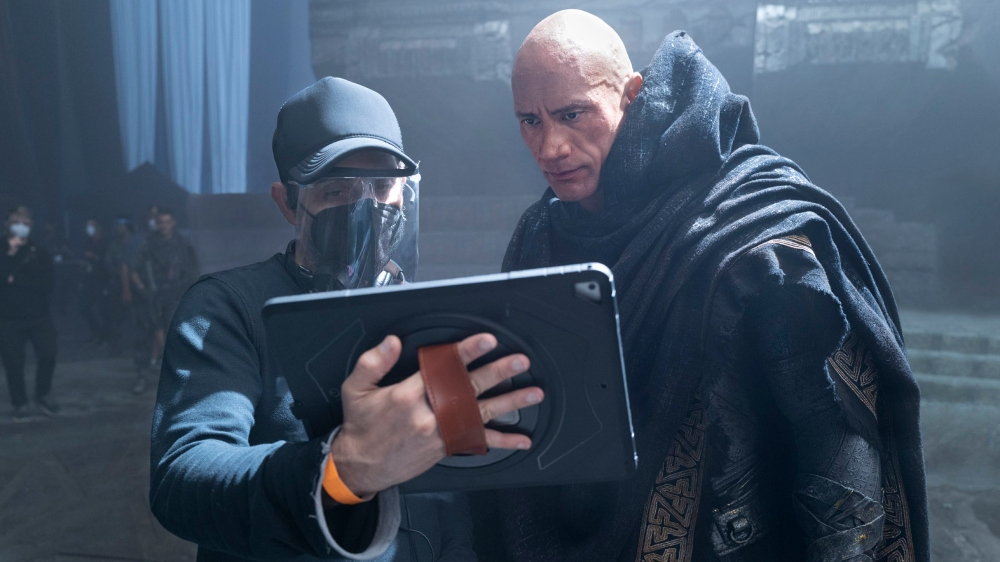
BTL: You have a history of editing comedy, including one of the best comedies of all time in Bridesmaids. How did you handle mixing comedy into a VFX-heavy comic book movie?
Sale: Well, the fascinating thing is, in a comedy like Bridesmaids, we have hundreds of jokes. In something like Black Adam, you really need to pick your spots because if you have too many jokes, it really just breaks the tension and it makes a silly version of the movie, which sometimes is good. But what we had to do was be disciplined in when and how we used the comedy, and make sure that the comedy didn’t undercut the film or the characters.
BTL: Were there jokes that you and John had to take out after test screenings?
Sale: Many, yes. We started with more, and then as time goes on, you start to feel the rhythm of when the audience kind of wants the tension to break, or when they want to laugh, and then you go, like, ‘Oh, that’s one we want to keep.’ The hardest part probably was in the first 20 minutes because there are some really intense scenes, both the opening and when Black Adam awakens.
We really leaned on the character Karim to teach the audience that there was going to be some comedy. When he’s introduced, there are little jokes. They’re not big jokes but there are little ones, and that tells you that later in the film, it’s going to be okay to laugh at some things.
BTL: I love how Dr. Fate tells Karim that he’s not going to die of electricity.
Sale: Yeah. Mo [Amer] is an incredible actor and audiences just love him. That’s the thing — I could have put in another 30 jokes and they would laugh at [them], but it might not be the best version of the movie.
BTL: It’s interesting to watch this version of Pierce Brosnan. In some ways, it felt like an older version of James Bond, with him playing a mentor-type role.
Sale: Pierce has an incredible amount of charisma. I thought it was a stunning choice for this character and this role. What I love about [him] is that he’s timeless, both as an actor and in this character. It’s just so fun to see him kick ass, too. We really wanted everyone in the JSA to have their moment and everyone to get to throw down and be formidable.
It’s tough when you have a character like Black Adam, who can shoot lightning. His superpowers are intense, right? You have to make sure that the people fighting him and battling him also are formidable, right? Or it becomes really — you’re like, ‘why did they keep trying?’ Right? Pierce, I think, led the charge. Of course, I love Aldis, and Hawkman is one of my favorite characters, too.
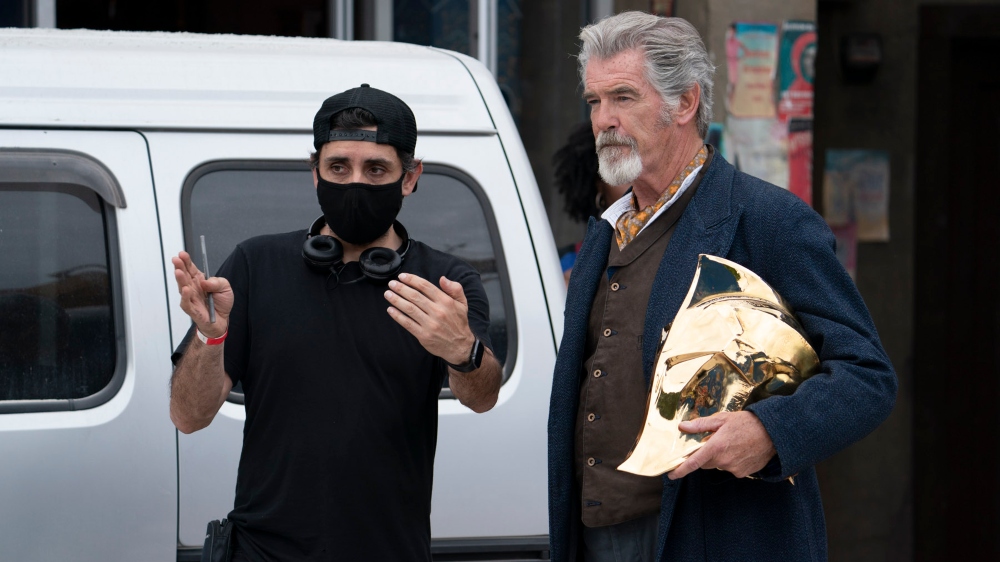
BTL: When I watched the film, it was the mid-credit sequence that drew the biggest cheers by far.
Sale: Yes, that was something that — I learned a lot about that probably the same time people on the internet were learning about it. I didn’t know — that was something that was shot very late in the process and it was very much secret. All of a sudden, I heard we had a test. I was like, yeah, we got a couple. We had several different end-credit things. That was only one of them, but that was one I know Dwayne and Beau were very passionate about getting it in. I thought it was an amazing choice. I liked the franchise, too, and I love Henry. I’m a big Superman guy.
For me, when I saw the dailies, personally, I had a moment where I went, ‘Oh my God, I’m working on a movie that’s gonna have Superman in it.’ It’s a long way from cleaning those movie theaters [playing] Superman. I’m like, ‘wow, this is a pretty intense thing that’s happened to me,’ personally. When we took the first version of it and showed it just to a small [number] of people, they went absolutely crazy.
It’s not shocking or surprising to me but I’ve been watching fan reactions on Twitter and it delights me to see how happy they are. I went [opening] Friday night to the Burbank AMC and the audience just went absolutely crazy. Of course, as a filmmaker, you love seeing stuff like that.
BTL: I only wish it didn’t leak out the week before I saw the film.
Sale: Yeah, that stuff is unfortunate. We had a giant premiere in New York City with 18 theaters and they let fans in. The thing is, some of the fans were super responsible there. They tried to have tight security. We knew, look, if you show it to that many people, somebody might go online and say, in text, what happened. But the idea that somebody would photograph it and put it online — they took that down pretty quickly. It’s annoying, but the thing is it’s impossible in today’s technology to keep [a secret] — unless you just don’t show it to anybody, which we could have done.
But the thing is — I can’t speak for Dwayne, but I know they love the fans and they want to have a premiere and show this to the world in a big way in New York. We could have just had a bunch of people from Hollywood fly to New York and watch this thing in a 200-person theater. We were proud of the film and it was like, let’s just show it.
BTL: What was the most challenging sequence when it came to editing the film?
Sale: There are really two. I often joke that I spend my life working on [the] beginnings and endings of movies, or reel one and reel six, as we like to think of them as we go back to film reels. In this one, reel six, the ending, the last 20 minutes, was incredibly challenging because, again, you have a lot of characters and you’re trying to tick off all the boxes, and there’s a lot of intercutting.
When you have something emotional, like Dr. Fate’s storyline, where he’s going to be killed and you want it to be emotional, and you have Black Adam with his family and trying to say “Shazam,” finding the exact right pattern of when to cut those things and how, and then, you have Amon and his mom and the Khandaqis and you’re trying to juggle all those things… We made many, many versions of that, and Jaume, the director, and I were working on that sequence right down to beyond the very last minute. We were getting phone calls going, ‘you have to stop, you can’t do it’ — and we’re going, ‘we are going to stop tomorrow,’ and [we] keep going and keep going.
There was a moment where I thought, ‘man, maybe visual effects will not make it. Like, what have I done?’ [But] they’re an incredible team and we somehow made it through the mix. We got to a version, eventually, [and] Jaume always said, ‘when we get the right version, we’ll know it.’ One day, we got to a version we liked, [and] ‘oh, that’s the cutting pattern right there. That’s how it goes.’ We showed it to the producers in the studio and everybody’s like, ‘wow, yes.’
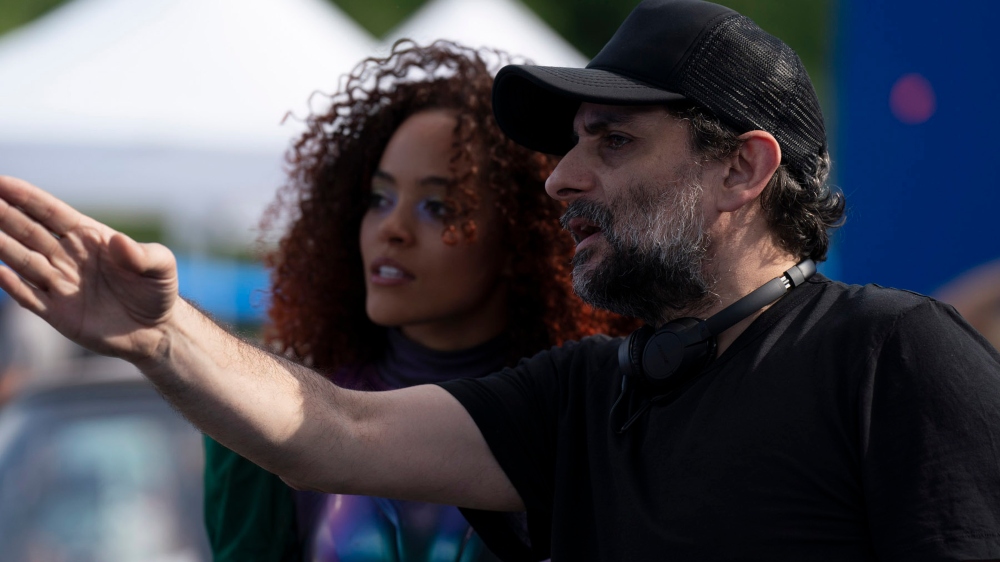
BTL: How did you balance editing duties with John Lee?
Sale: It was great. I came in late to the project. John started up during dailies. Once I came in, we didn’t section out the movie. We shared the movie. Sometimes, he would cut reel one; sometimes, I would cut reel one. We would show each other stuff at the end of the day. We watched the movie almost every Saturday. Together, we made many, many different versions; some long, some short, some with things moved around in all kinds of different ways. We had many, many different endings, many different tries, many different things. It was just great.
He has such a huge background [in] comic book movies and knowledge of some of the biggest and best movies with comic book characters that they’ve ever made. In addition to that, he’s also a real comic book nerd guy who has a great background [in] the history of a lot of these characters. I’m more like a comic book movie guy, and I would have to constantly go, ‘John, I want this person to do this.’ John would go, ‘wow, really? Hawkman is this, this, and this,’ [and] I’m like, ‘Oh, okay.’ It was really fantastic and he’s a super smart guy.
We also had another person, Krisztian Majdik. It was very interesting because Krisztian was an additional editor. He is a pre-visualization editor but Jaume chose to also carry him through post-production, which was a unique thing, but it turned out [that having a person who had started on the movie during pre-visualizations work with us through the end really was fantastic. I think it allowed us to get through post-viz and amplify the action scenes in a really terrific way. He’s a great guy, a talented guy. He will eventually be a great feature film editor if he wants to be. Emily Freund was my assistant, who was phenomenal and a huge asset to the film. It was a good crew that John and I were so lucky to be involved with.
BTL: How long after principal photography finished did you have a rough cut of the film?
Sale: Very, very quickly. I wasn’t on site for that. I was still finishing Red Notice but I was watching stuff at home and watching cut footage at home at night because I can’t stop working. They came in — Jaume, the director, did not do the thing where he takes two or three weeks off. They finished shooting, and he and John and Krisztian dug in, and in two weeks, they had an assembly of the movie. Most of the reels, not reel six.
I think when I joined in early September, which was maybe three or four weeks after wrap, they showed me five reels that had already been worked on. I had to start from the beginning and then start going through the film reel by reel. The first thing I did when I got there is kind of make a pass on all the reels.
BTL: How long was the first cut?
Sale: I think the initial edit that we had with all six reels came in somewhere around 2:28 or something like that. With the visual effects movies, they don’t get too big because it would be a billion dollars in visual effects. Some of the comedies I did would be three hours long because we’ve just got Kristen Wiig and Melissa McCarthy going nuts and [doing] these 12-minute-long scenes. But with the visual effects-type movies, it’s a little tighter from the beginning.
BTL: It’s funny you mentioned comedies, as I was interviewing the editor and sound editors of George Carlin’s American Dream and one was saying how Judd Apatow actually said, ‘can you make it shorter?’
Sale: I love that doc. I’m a huge George Carlin fan. I grew up in the ’70s. He was one of the first stand-ups I saw. I love that documentary that they made — fantastic.
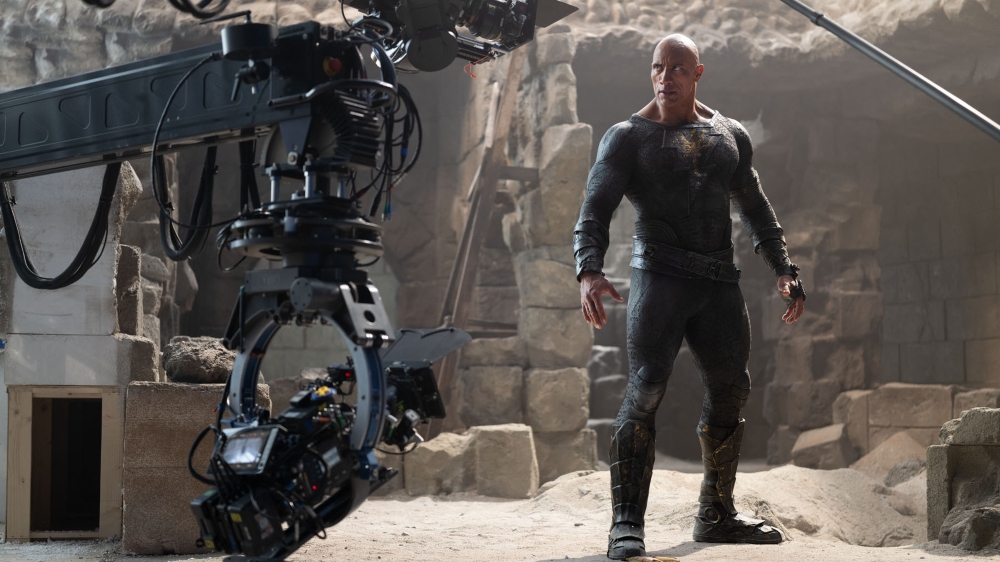
BTL: What were some of the challenges that came with editing the film during a pandemic?
Sale: On this one, we had it pretty much dialed-in. What we did was a hybrid setup, where you pretty much could work at the office or from home. But the biggest challenge, I think, is collaboration, because the Zoom-type setup, whether it be Evercast or Pack Post Live, or whatever it is — those are great for certain things but it’s not the same as working in a room with a director. On this one, we were all working together in the same building but we were all often isolated in our own rooms. We didn’t hang out a lot together as much as you normally would.
I have to say the group was pretty amazing. We did have some positive tests but everybody was super responsible. What we never had was a widespread breakout. If somebody wasn’t feeling good, they were taught right from the beginning, don’t come into work, take a test. We had a few people, of course, [who] would get [COVID] during the course of the year but we never had it really shut down the cutting room.
We [gave] every assistant and every editor the ability to work from the office or to jump in and work from home, which not only was good for COVID, but it was good because in the past, a lot of times I would be hanging out at an office building til 11 or midnight [just] waiting for visual effects shots or music or something to come in.
But on this movie, I could leave at 8 p.m. and then just throw up the Avid on my jump system. I could just have dinner with my wife, hang out with my dog, jump on the system, watch the visual effects, and stuff like that. That part of it was great. The main thing was just being responsible and trying to make sure that we didn’t shut down the whole thing. It was definitely a challenge.
BTL: How did you first get an interest in editing?
Sale: I actually started on stage as a kid doing local theater, high school theater, and performing. I did a play when I was in junior high. It was at the high school, which happened to have a radio station. They let me join the radio station — when I was in seventh grade, I had a radio show. I always tell people I had a radio show in the ’70s. They’re like, ‘how old are you?’ I was like, ‘well, I was 12 when I had the radio show.’ They’re like, ‘you had a radio show when you were 12?’
I started doing radio, [but] I was also doing comedy and stuff. That sort of led to editing, layering, [and] making fake commercials, and sketches and stuff. I actually started with audio. Then cable came and they gave the public access station to the high school because we had that radio station. I started editing in high school and the second I did it, I was like, ‘Oh, I don’t have to be the one that’s on stage. I can be like the Wizard of Oz over here behind this curtain, just watching the audience.’ I love not having to be the one to go up there. I could write and I could make stuff and I could edit stuff, and then show [it] to groups of people, and I love that process.
BTL: Do you miss editing on those older machines?
Sale: Absolutely not. I love film and I am a tech nerd and a gadget nerd and I love all those things. I still have — lying around my office here — old computers and different hard drive configurations. I have an optical drive with the backup, no media, but the project of Tommy Boy still, that I could plug in and see the bins, maybe. I doubt I could even hook that up to a computer. I’m glad I lived through it all and I’m glad I have the knowledge of it all. It forced me to learn different ways of editing. It made me a better editor, I think, to have learned all those things, but I don’t really miss cutting on them.
Black Adam is currently playing in theaters, where it has grossed more than $325 million worldwide as of this writing.





